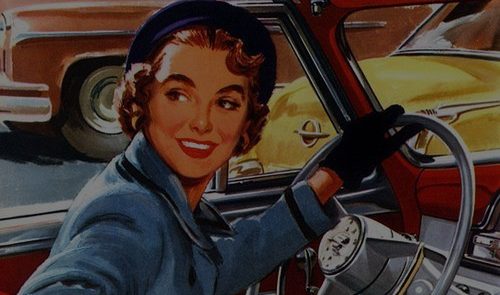
10 Most iconic leather jacket moments in pop culture
Few garments are more enduring than the leather jacket. From 50’s greasers to Tumblr-era style icons, it’s been a uniform for musicians, bikers, and anyone looking to make a
What is Leather?
Leather is the skin or hide of an animal that has been treated by tanning. Its history is traced back to ancient times and referenced in texts dating back to 5,000 BC.
Why choose Leather?
Leather is a durable, versatile, and sustainable material that often improves with age. It has many attributes that we have yet to be able to recreate using synthetics. For example leather can be made waterproof, fire retardant, stain-proof, lightweight, and abrasion-resistant, as well as soft, warm, and colourful.
How durable is leather?
Leather is a strong and natural product. Its durability is illustrated by its choice for use in high impact, high wear and high stress environments – historically from armour to containers and from sporting equipment to furniture upholstery.
What about Hygiene benefits?
Leather allows the passage of moisture and air which is why it is popular for shoe and glove manufacturers and is useful in maintaining foot hygiene, especially for children.
Where does US Leather come from?
US leather is made using the left over hides from cattle farming. No animals are killed to produce US leather, it is entirely recycled.
Why is US Leather world leading?
The US uses the highest processing and production standards to ensure consistency and quality with the end product typically of the highest international standard. The quality also reflects the leading welfare standards of the US livestock industry.
How do I know if leather is from the US?
US ‘ADT’ regulations require the tracking of animals within the national market. In addition, the industry is working to deliver a new program that will allow hides to be traced back to the meat packer or hide processor of origin. This should be ready in the next 12 months and will be certified by the USDA Agricultural Marketing Service.
Why not use ‘fake leather’?
Leather alternatives are made from synthetic materials that are typically non-renewable and oil based i.e., plastics. They often lack the attributes of leather including strength, durability and the ability to breathe. This is why leather has been made and used for thousands of years.
Does the value of leather lead to the killing of animals?
No. Cattle hides, which are the most widely used hide or skin for leather production, typically represent less than 2% of the total value of a US beef animal. Its low relative value is why there is no leather farming industry – and why farming will continue regardless of demand for leather.
Is leather really a recycled product?
Yes. In the US there are more than 30 million hides left over from cattle farming every year. If these were not recycled for leather then these would go to landfill or be destroyed as waste. Alternatives, typically plastics, would then be required.
Why not throw away the waste?
Without the leather industry there would be a challenge to deal with very large volumes of perishable waste – the 30 million plus hides left over every year. This would generate additional carbon emissions and have serious consequences on solid waste systems and the environment. It is estimated that if the leather industry closed down the waste would fill all available US landfill sites within four years.
What is the carbon footprint of leather?
As a waste product it has no direct carbon footprint bar in the tanning process. It has been suggested that using leather, rather than sending to landfill to biodegrade, holds carbon in the system.
What are the environmental impacts of the process?
If done properly then the impacts of leather production are small with the process constantly being improved. Chrome tanning uses half of the chemicals required by alternatives and produces waste that is fully manageable. The US industry is carefully overseen by independent regulators.
What about the alternatives you mention?
Vegetable tanning and other alternatives to Chromium III tanning all include chemical inputs and require waste management technology. These technologies are constantly improving and USHSLA supports efforts to improve efficiencies that improve leather’s sustainability. At present Chrome tanning is more efficient than alternatives, minimizing energy use and waste.
What are the overall environmental standards for US leather?
The industry works within a comprehensive regulatory system covering clean water, clean air, waste disposal, and contaminated land clean-up. “Reduce, reuse, recycle” is widely-adopted in animal agriculture and leather manufacture. The first leather tanners are now using renewable energy and others are using renewable vegetable dyes and renewable and recyclable tanning chemicals.
How much water is used to make leather?
Less every year. Globally water consumption for the production of leather from cow hides has declined by more than 35% in the past 25 years. The tanning industry globally accounts for 0.075% of industrial water consumption.
How long does leather take to biodegrade?
Whilst leather products will last lifetimes once disposed of, leather biodegrades in less than 50 years. For context it would take nearly 500 years for synthetics derived from oil to degrade.
How is leather produced?
Hides and skins are converted into leather through the tanning process, where they are treated using tannins. Today most tanners employ mineral tanning using salts, vegetable tanning using extracts from plants; or synthetic tanning using organic chemicals.
What chemicals are used to make Leather?
Almost 90% of US leather is made via Chrome tanning with the rest using vegetable or other processes. Chrome tanning uses Chromium III which is harmless, unlike Chromium VI. Chromium III is part of our required diet, taken as a supplement and naturally occurring in bread, green peppers, apples and so on. Actually, tanning uses very little Chromium III. Most Chromium III is used to make stainless steel and for chromium plating.
Can you give us any more facts and figures on the US industry?
The value of cattle hides and skins represents approximately 5-10% of the total market value of an animal, with the rest of the value being for the meat.
The US meat industry generates more than 32 million cattle hides a year, 4.7 million pig skins and nearly 2.2 million goat and sheep skins.
More than 26,000 people in the US are directly engaged in the industry. It supports 5.4 million jobs and $257 billion in wages.
The US exports annually approximately 95% of all that it produces, at a value of $1.62 billion in 2018.
Photo by Daniela Cuevas on Unsplash

Few garments are more enduring than the leather jacket. From 50’s greasers to Tumblr-era style icons, it’s been a uniform for musicians, bikers, and anyone looking to make a

What’s the first thing that comes to mind when you imagine sitting in a luxury car? It’s the smell of leather, isn’t it? Leather’s been linked to the motor industry since the very beginning- the very first car, built by Carl Benz in 1886, had leather

From apprenticeship to multi-billion-pound luxury leather industry, the story of Louis Vuitton spans nearly 200 years

Founded in Florence in 1926, the company uses the highest quality tanneries and craftsmen to produce some of the best leather accessories around.